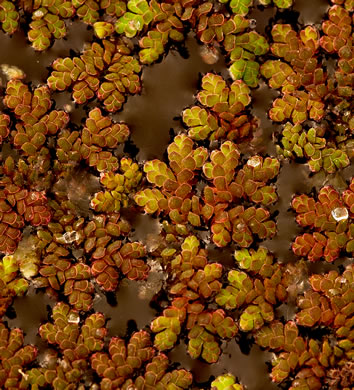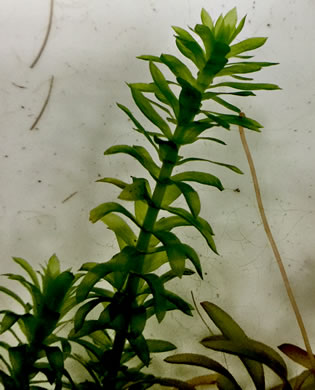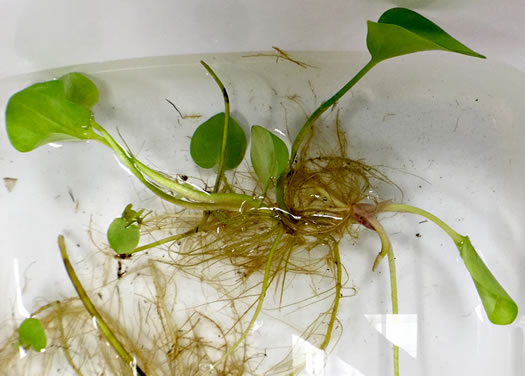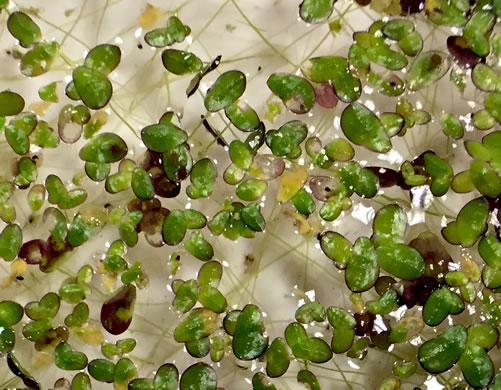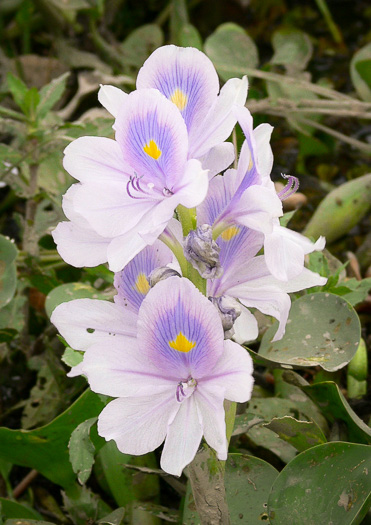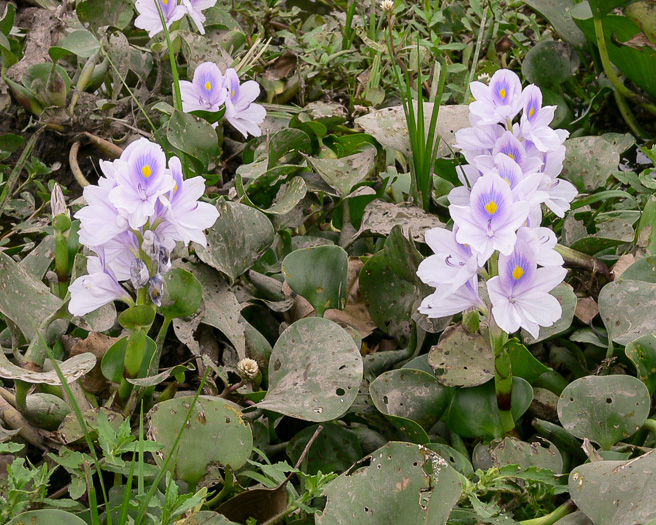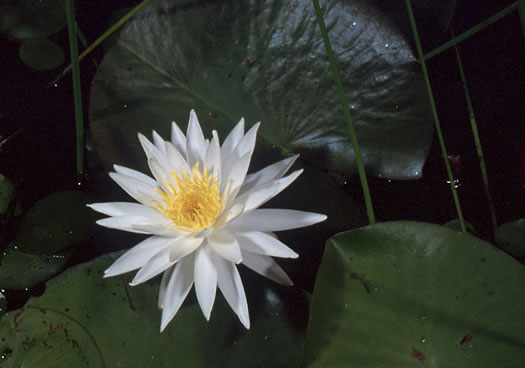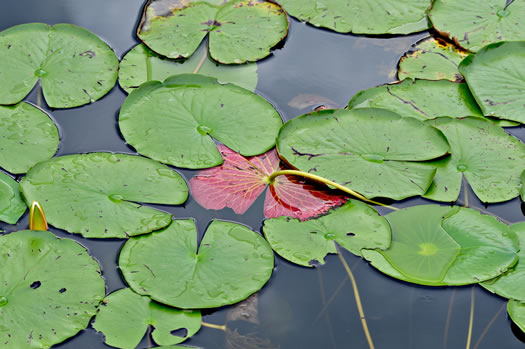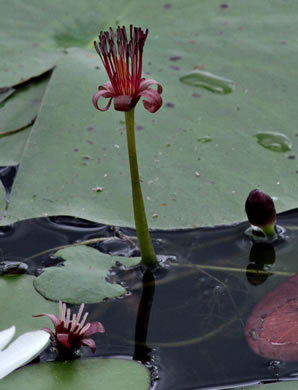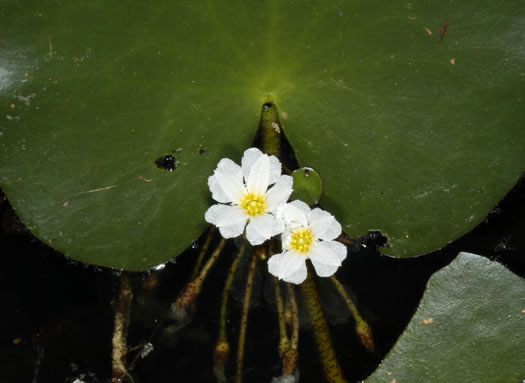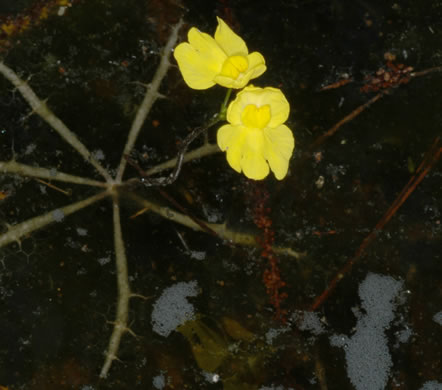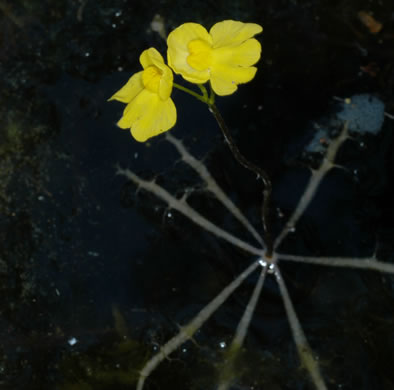South Carolina's Natural Wildflower Communities —
THE COASTAL PLAIN:
The freshwater floating aquatics community
Freshwater floating aquatics
Hydrophytes include aquatic plants that normally grow in water or inhabit soils that contain more water than is optimal for the average plant. One of the outstanding structural features shared by most hydrophytes is aerenchyma tissue. This tissue is formed by the disintegration of groups of tissue cells or the separation of cells, which creates enlarged, intercellular cavities (lacunae) that become filled with gases. These air-filled cavities allow hydrophytes to float.
One group of hydrophytes is the freshwater floating aquatics, the true aquatic plants: They consist of three types:
(1) the submerged, anchored;
(2) the floating-leaf, anchored; and
(3) the floating (no soil contact).
These aquatics are greatly developed in lakes, ponds, freshwater sounds, canals, abandoned rice fields, and sluggish streams. They generally occur in the sandhills, coastal plain, and maritime strand. Today, much of the habitat for the aquatics is human-created. Reservoirs, such as Lake Moultrie and Lake Murray, harbor along their shores a rich, aquatic growth. Inland swamps that were dammed to create water reservoirs for growing rice now support aquatic populations, and many multipurpose canals that were dug for various reasons provide habitat for the aquatics. As was previously mentioned, the abandoned tidal rice fields support aquatics on the fringe of the marsh vegetation. The aquatics are also found in deepwater pockets in inland swamp forests where dams maintain the water level year-round and in ox-bow lakes that form along the major rivers.
A number of submerged, anchored aquatics occur in waterways throughout the state. Often their flowers project above the water‘s surface. Two species with conspicuous flowers are
fanwort (Cabomba caroliniana)
and Brazilian elodea (Egeria densa).
The floating aquatics are represented by water hyacinth (Eichhornia crassipes) and four genera of the duckweed family (Lemnaceae): duckmeat (Spirodela), duckweed (Lemna), water-meal (Wolffia), and bog-mat (Wolffiella). The floating mosquito fern (Azolla caroliniana) is also common.
The most spectacular of the aquatics are the floating-leaf, anchored species, with their showy flowers borne above or on the water‘s surface. Most prominent of these is fragrant water-lily (Nymphaea odorata). Other species are
cow-lily (Nuphar sagittifolia),
frog's-bit (Limnobium spongea),
water-shield (Brasenia schreberi),
big floating-heart (Nymphoides aquatica),
and floating bladderwort (Utricularia inflata).
South Carolina's Natural Wildflower Communities is adapted from A Guide to the Wildflowers of South Carolina by Richard D. Porcher and Douglas A. Rayner. Used by permission.
To see pictures or additional information about a particular plant, click its name or its picture.

